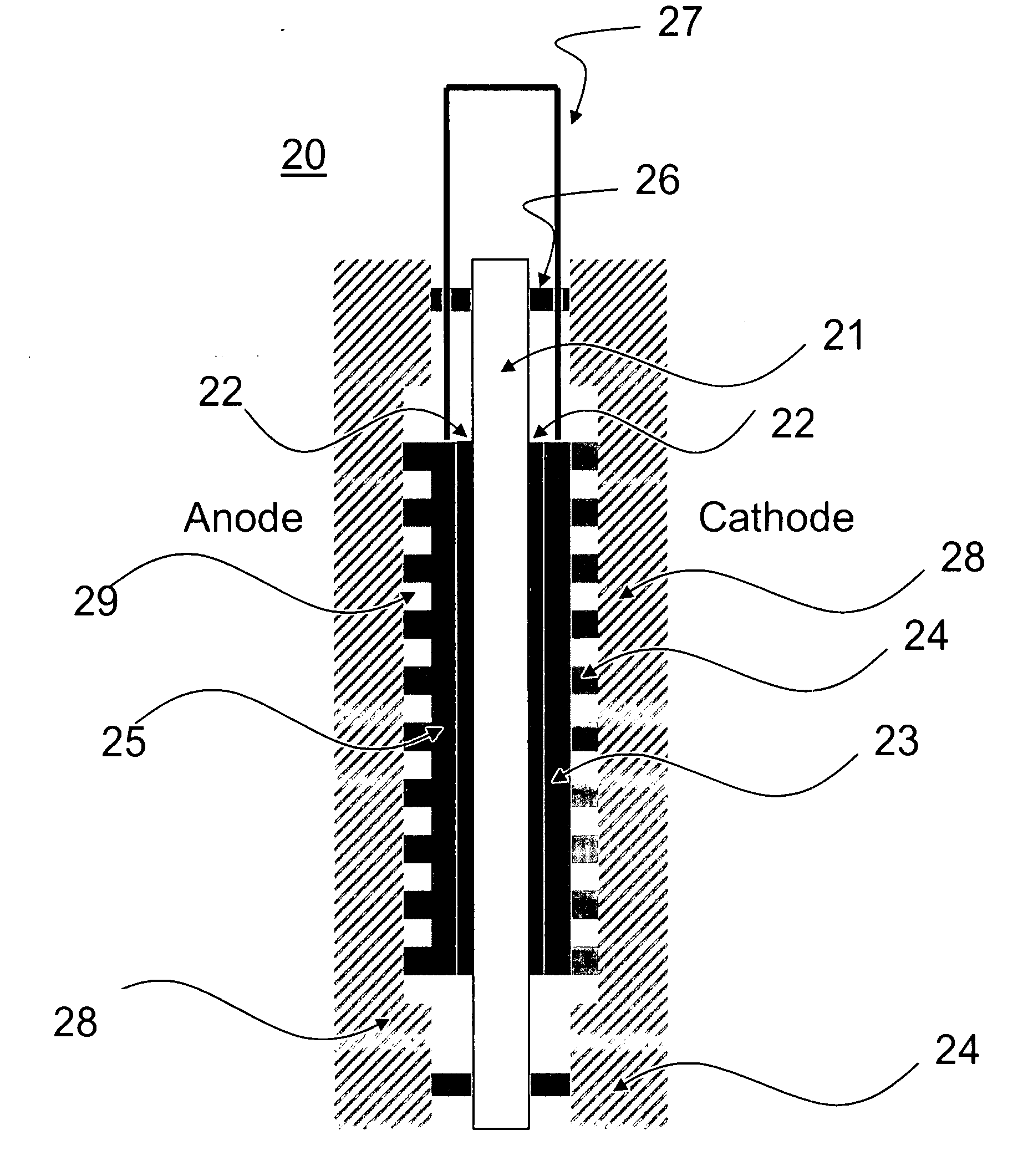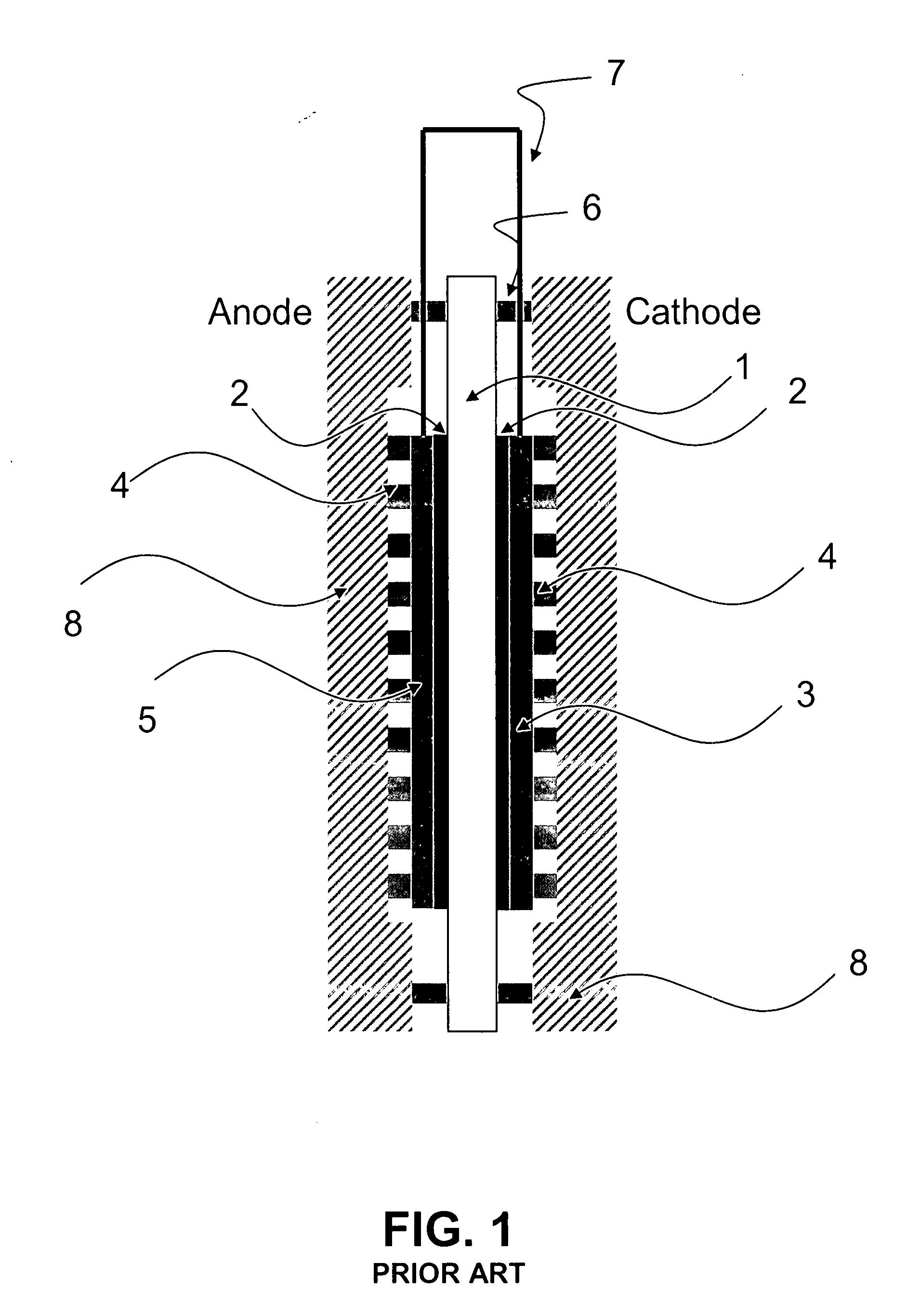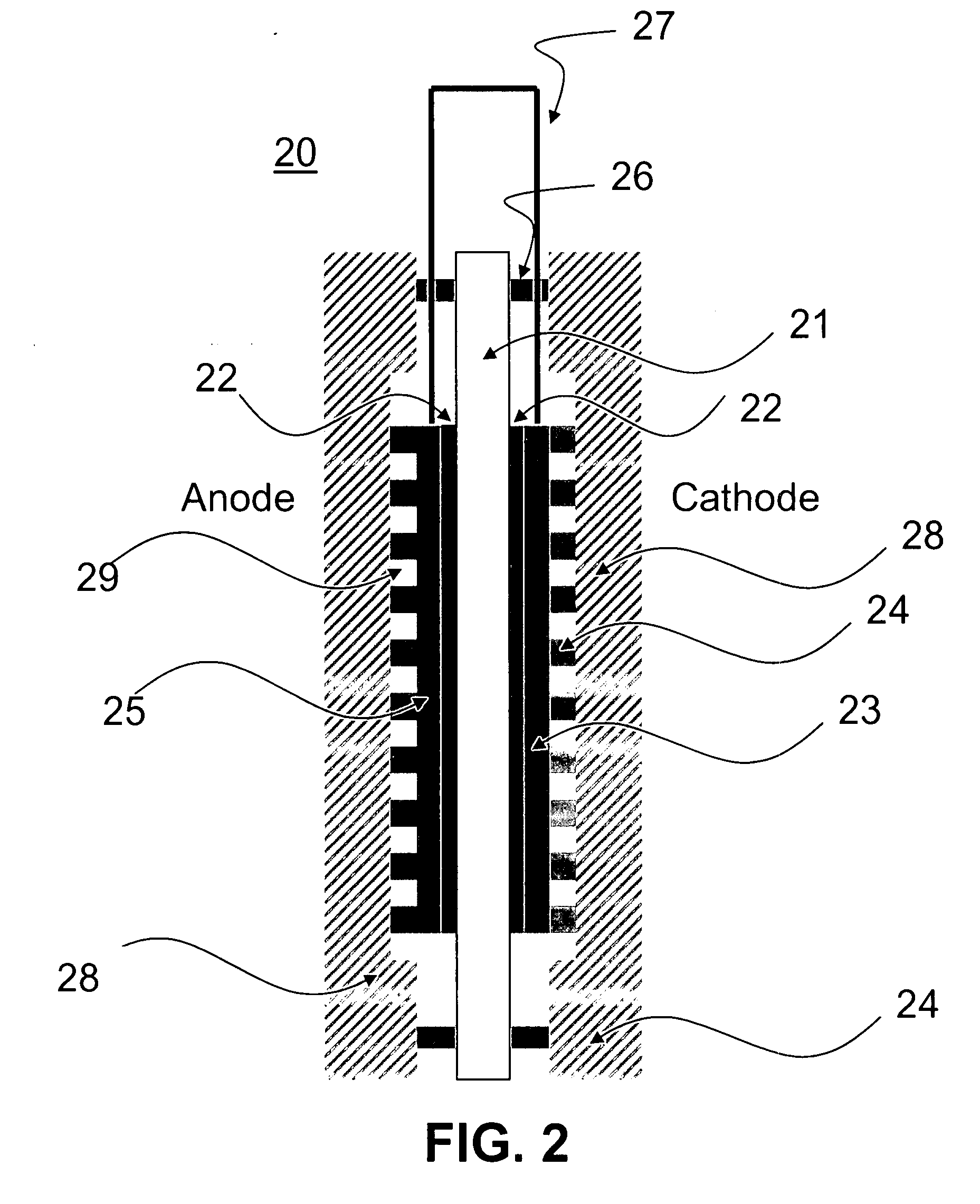Integrated flow field plate and diffusion electrode in a fuel cell
a flow field plate and fuel cell technology, applied in the field of fuel cells, can solve the problems of low catalyst activity for methanol electro-oxidation, crossover of methanol through, and dmfcs from widespread commercial applications, so as to reduce the liquid fuel, simplify the manufacturing and assembly of the fuel cell, and reduce the cost
- Summary
- Abstract
- Description
- Claims
- Application Information
AI Technical Summary
Benefits of technology
Problems solved by technology
Method used
Image
Examples
example 1
Direct Methanol Fuel Cell (DMFC) with Anodic Integrative Structure
[0054]Again making reference to FIG. 2, in one aspect of the present disclosure, a fuel cell includes an anode 25 made from a flexible graphite plate. In this example, a conventional cathode is used. The flexible graphite plate is mechanically-molded (or otherwise structured) to form a flow field pattern for product and reactant transport. For example, parallel flow field patterns may be mechanically formed in the graphite plate for methanol transport. Methanol solution flows through the channels29 and diffuses through the electrode 25 to the interface between the catalyst 22 and the membrane 21. The diffusion flux of aqueous methanol to the interface can be effectively adjusted to a reasonable level by controlling the structure of electrode 25, such as its porosity. Typical spacing and sizes of parallel flow field patterns for the present disclosure are shown in FIG. 3, where inter-channel spacing is about 1.4 mm, ch...
PUM
 Login to View More
Login to View More Abstract
Description
Claims
Application Information
 Login to View More
Login to View More - R&D
- Intellectual Property
- Life Sciences
- Materials
- Tech Scout
- Unparalleled Data Quality
- Higher Quality Content
- 60% Fewer Hallucinations
Browse by: Latest US Patents, China's latest patents, Technical Efficacy Thesaurus, Application Domain, Technology Topic, Popular Technical Reports.
© 2025 PatSnap. All rights reserved.Legal|Privacy policy|Modern Slavery Act Transparency Statement|Sitemap|About US| Contact US: help@patsnap.com



